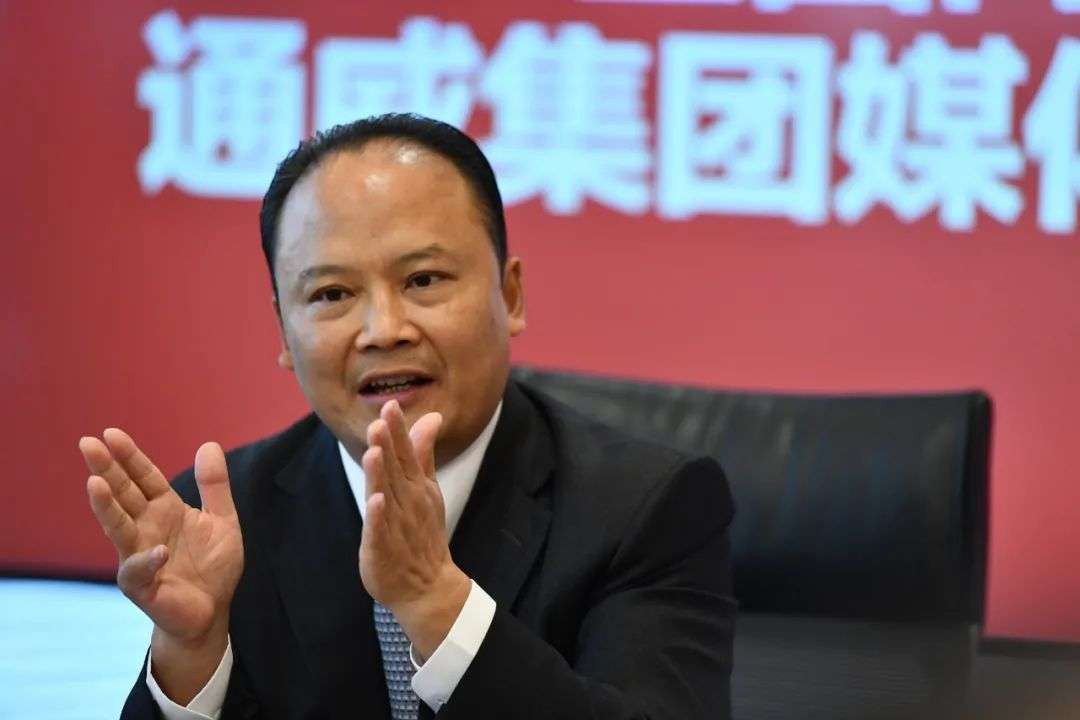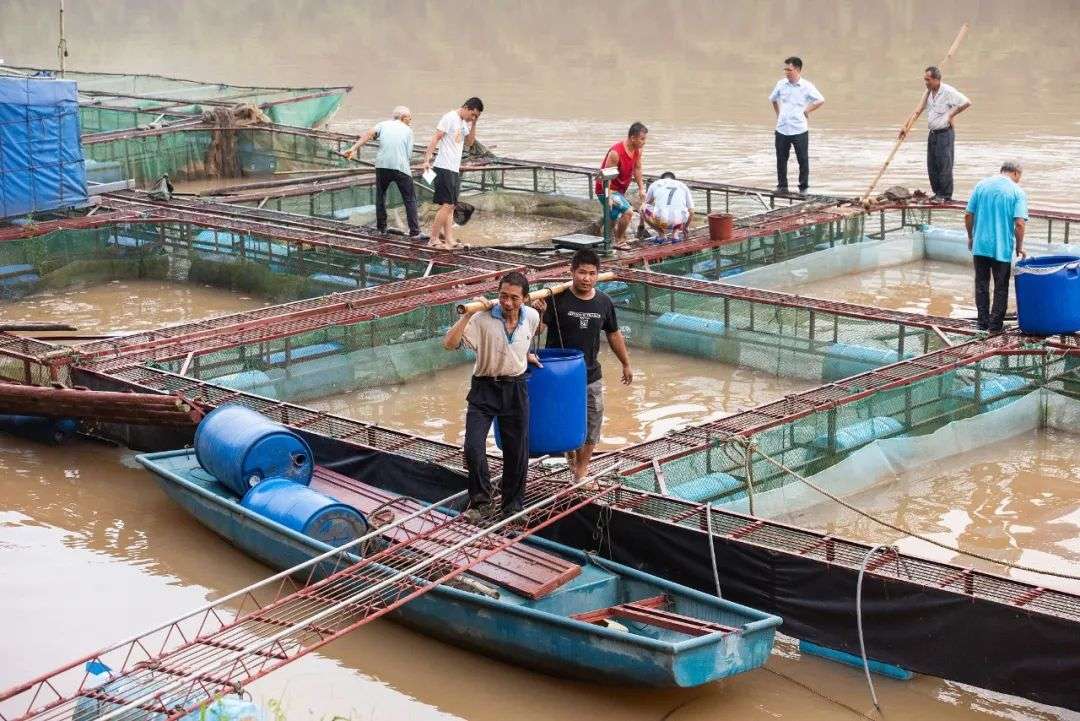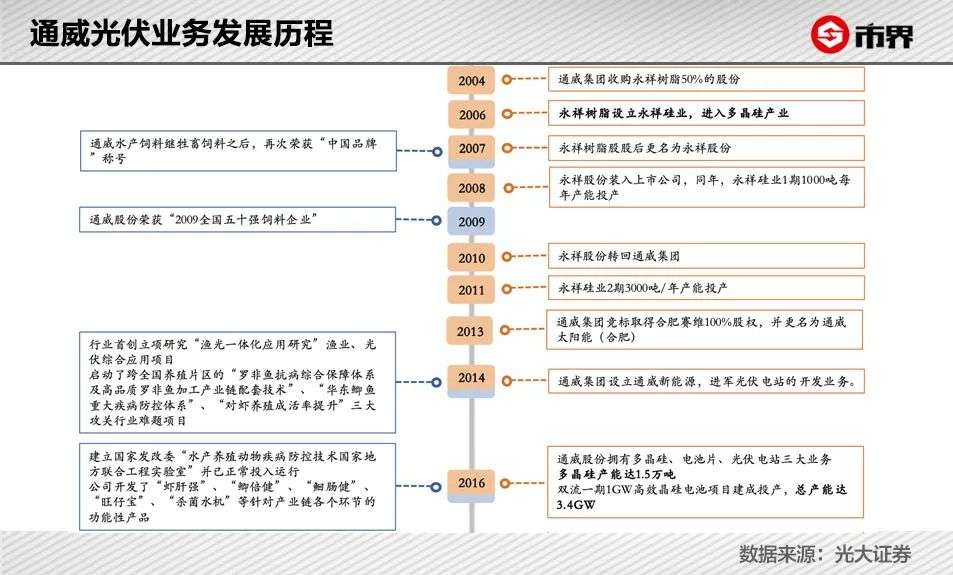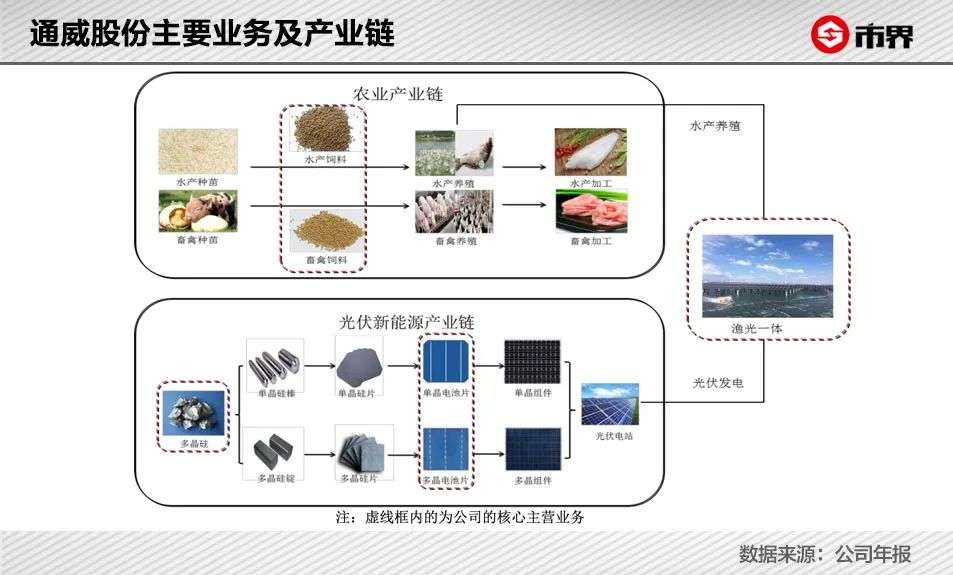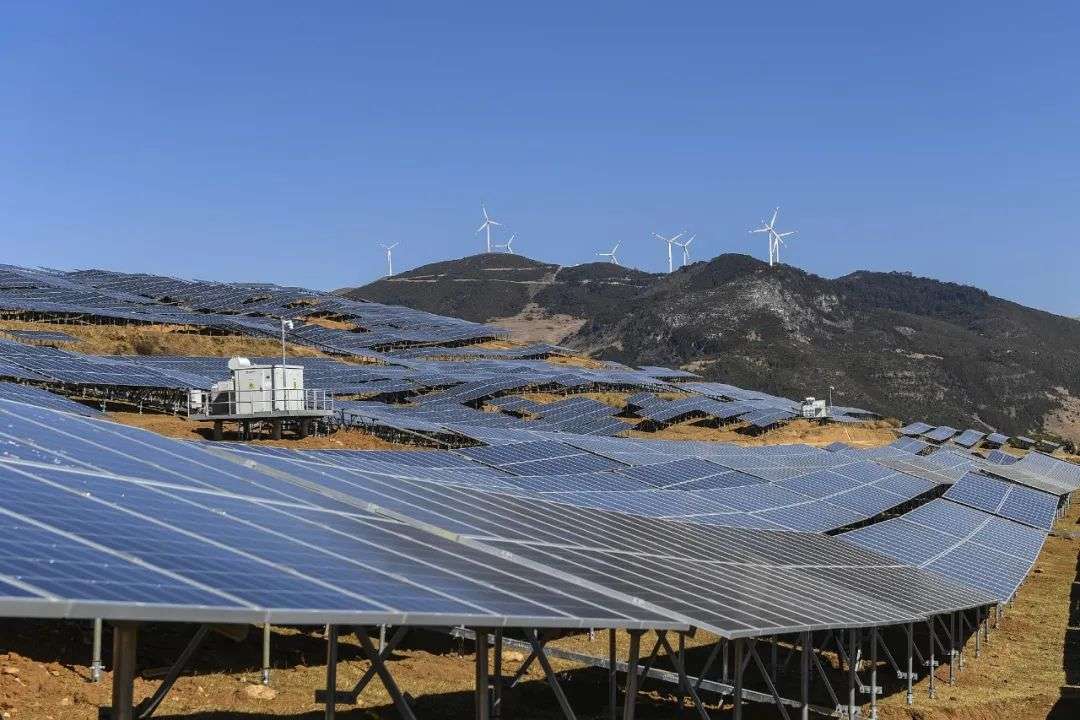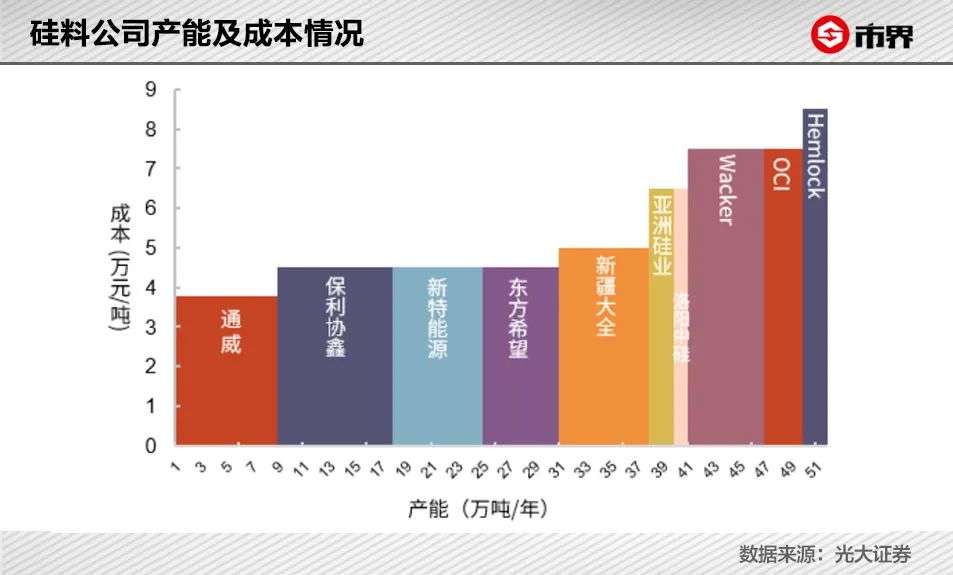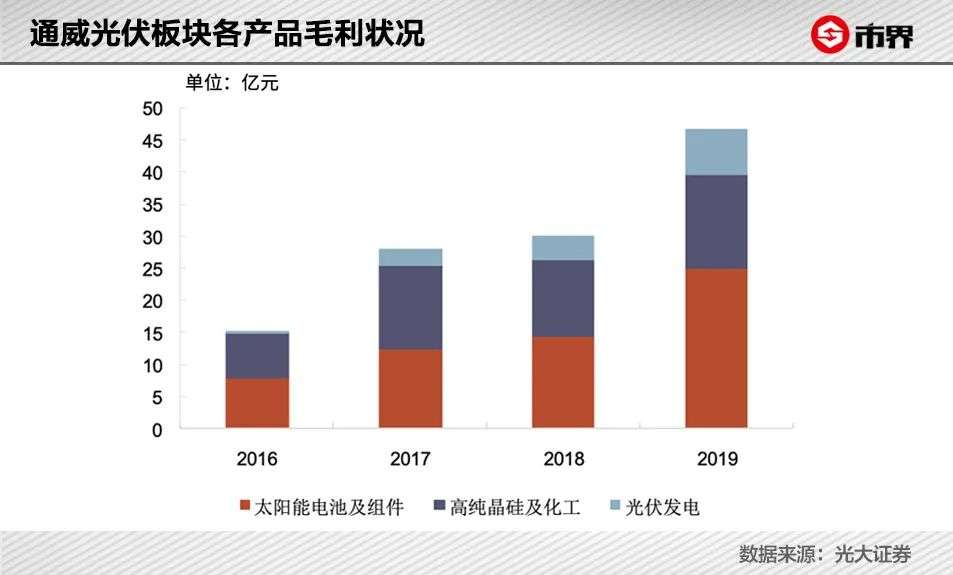Tongwei shares encountered a black swan.
Editor’s note: This article from the micro-channel public number “city limits” (ID: ishijie2018), of: Nan, Editor: Li Shuguang.
In 1984, Liu Chuanzhi founded Lenovo. Zhang Jindong, who had just graduated, entered a state-owned enterprise. Zhang Ruimin took over a close-down factory in Qingdao. A Meishan youth named Liu Hanyuan started a fish farming venture.
Fish farming is his specialty, but the actual practice is not as easy as imagined. 24 hours a day, the fish must be fed once every 6 hours, and each time they are eaten seven to eight minutes full, they cannot be hungry or last. This requires patience and perseverance, as well as carefulness and skill.
Liu Hanyuan is experimenting with fish farming in cages. The price for this is that the whole family makes fish feed by hand and stays up late to feed them.
This became the starting point of his career. Since then, the young man from the countryside established Tongwei, a leading agricultural enterprise, and Tongwei suddenly crossed the borders of photovoltaics, and created a unique development path of “fishing and power generation”—the integration of fishery and light.
Fish feed has made Tongwei’s past, while photovoltaics embodies Tongwei’s future. In the past year, the photovoltaic sector has become very popular. Tongwei’s stock price rose by more than 230% at one time, becoming the second A-share photovoltaic giant with a market value of over 200 billion.
However, since February 18th, its stock price has suddenly continued to fall. Compared with the previous high of 55.5 yuan, it has fallen by as much as 30%, and its market value has evaporated by 75 billion.
This is related to the overall setback in the stock price of the photovoltaic sector, but only Tongwei hit the lower limit on March 3 and 4, which inevitably caused some investors’ doubts: whether the cross-border Tongwei can be consistent with continued focus Comparable to the leading photovoltaic industry?
A fish farmer with unexpected achievements
Before becoming a photovoltaic giant, Tongwei was a leader in agricultural industrialization and a major global aquatic feed manufacturer.
In 2004, Tongwei Co., Ltd. was listed on the Shanghai Stock Exchange. Its main business is the production and sale of feed and feed additives. In the feed processing industry, especially in the field of aquatic feed, Tongwei holds a leading position in the market and has maintained the No. 1 sales of aquatic feed in the country for six consecutive years.
Liu Hanyuan, the helm of Tongwei, created the development context of Tongwei.
The land of Chengdu, the land of abundance, is fertile and rich in materials. If you take good care of the land, you can live and work in peace. Liu Hanyuan was born in Meishan in 1964, and his ancestors worked in agriculture.
As a fellow Su Shi, Liu HanYuan has been smart since he was a child. Complete primary school in 4 years and junior high school in 2 years. At the age of 13, he went to a technical secondary school. Originally, he volunteered for electronics, but somehow he was admitted to the Sichuan Fisheries School and learned freshwater aquaculture.
Major is not what I am interested in, but Liu Hanyuan has learned fish farming technology very solidly, and after graduation, he started to work as a fishery technician.
Liu Hanyuan
After the reform and opening up, Sichuan introduced policies to encourage people to compete for 10,000 yuan. There are five “ten thousand households” that raise fish in Leshan. The government is going to commend them. The relevant departments arrange for Liu Hanyuan and his colleagues to conduct an on-site inspection to see if they have raised as many fish as reported in the report.
After a review, the success of the ten thousand households shocked the two: the performance of ten thousand households did not falsify, but the fish farming skills are far worse than their own!
“We use technology to help them, and their net profit is more than 10,000 yuan in one year. Those of us who are teachers taught them how to make a monthly income of only 38.5 yuan, and only a few hundred yuan a year!”
This gap stimulated Liu Hanyuan’s nerves. At the same time, some advanced countries used one cubic meter to raise hundreds of kilograms of fish, which also stimulated his curiosity and enthusiasm: “Why don’t we raise our own fish?”< /p>
Everyone has the impulse to be unwilling to the current situation and the flashy thoughts, but very few really put it into action and stick to it. Liu Hanyuan not only moved his mind, but also embarked on the road of starting a business while working.
On October 25, 1984, Liu Hanyuan experienced the first time in his life that he was highly anticipated. Seven months ago, he put about 3,800 carp fry into a cage made up of discarded steel pipes, and started a metal cage fish culture experiment. Now he has reached the stage of acceptance of the results.
Members of the Water and Power Bureau, the Planning and Economic Commission and other government departments, as well as reporters from the Sichuan Daily and other media participated in Liu Hanyuan’s test and acceptance. A total of 2781 catties of fish were caught in a cage with a top area of 64 square meters, an average of 37.87 catties per cubic meter of water. Considering the calculation of the input of bait, one catty of fish can grow for every 3.22 catties of bait, which is equivalent to 25,300 catties per mu.
At that time, the highest yield in Sichuan was less than 20,000 jin per mu. Liu Hanyuan’s “channel metal cage-style flowing water fish farming” technology invented, in one fell swoop, setting a new high-yield record in the history of fish farming in Sichuan.
This technological invention could have become the foundation of Liu Hanyuan’s career.But in fact, Liu Hanyuan’s success came from abandoning this invention.
After the successful fish farming experiment, Liu Hanyuan was awarded the title of “Scientific Fish Farming Expert” by Meishan County. His invented channel metal cage-type flowing water fish farming technology was included in the “Spark Plan” of the Ministry of Agriculture and promoted to the whole country. But Liu Hanyuan’s next move was a rapid transformation, starting an enterprise and starting a feed business.
The main reason is that the promotion of net-cage flow-water fish culture technology has stimulated farmers’ enthusiasm for fish farming. If he continues to do pure fish farming business, Liu Hanyuan himself may not be able to maintain the lead. It is better to cut into the upper reaches of the industrial chain, focus on the large-scale production and sales of fish feed, and earn money steadily from the farmers.
Scattered and well-located net cage fish farming base
This shows that Liu Hanyuan’s business acumen is flexible. Later, Tongwei intervened in the photovoltaic industry and also occupied an advantageous position in the upstream of the industrial chain. No matter how fierce the downstream competition is, it cannot be separated from the dependence on the upstream.
On December 8, 1995, Tongwei Feed Co., Ltd. was jointly funded and established by Tongwei Group, Liu Dingquan, Guan Yawei and other seven people, of which Tongwei Group was 80% owned by Liu Hanyuan.
Tongwei Feed is the predecessor of Tongwei. Before 2016, Tongwei Co., Ltd. was mainly engaged in the agricultural product business, and aquatic feed was the only core product and the main source of profit.
In 2015, Tongwei’s revenue was 14.079 billion, a year-on-year decrease of 8.63%; the net profit attributable to shareholders of listed companies was 331 million, a year-on-year increase of only 0.56%.
In 2016, after Tongwei Group packaged its photovoltaic business into a listed company, Tongwei’s revenue for the year reached 20.884 billion yuan and a net profit of 1.025 billion yuan.
It is foreseeable that Tongwei’s future imagination will be supported by photovoltaic business.
Generating power while raising fish
Tongwei’s path to photovoltaics started with polysilicon in the upstream of the industry.
In September 2004, half a year after the listing of Tongwei shares, the main feed company, Tang Guangyue, chairman of Yestar Group, which also produces feed, came to his door and hoped that Liu Hanyuan would invest in one of his chlor-alkali chemical projects.
The chlor-alkali chemical industry is one of several major chemical sectors alongside petrochemical and coal chemical industries. It can be used to produce PVC (polyvinyl chloride).
At that time, with the rapid development of the real estate industry, the price of PVC required for related building materials and decorative materials soared, reaching a high of 9,000 to 10,000 yuan per ton.
Tang Guangyue launched a PVC project with a capacity of 100,000 tons-Yongxiang Resin Co., Ltd. Because the funds can’t keep up, we need to seek cooperation.
Liu Hanyuan also noticed the chlor-alkali chemical market. Therefore, the two hit it off and Tongwei acquired 50% of Yongxiang Resin’s shares and used its management methods and concepts to transform Yongxiang. Later, Liu Hanyuan further realized the holding of Yongxiang.
Tongwei has since taken a crucial step in its diversified development. However, Liu Hanyuan is not only interested in PVC, but also photovoltaic.
Trichlorosilane, a downstream product of chlor-alkali chemicals, is the main raw material for the production of polysilicon. Polysilicon is the foundation of the photovoltaic industry.
At the beginning of the new century, Europe has gradually matured in the development and application of new energy technologies, and the development of photovoltaics has been paid more attention in Europe.
In 2004, the German government promulgated the “New Energy Law” to subsidize photovoltaic power generation, and the photovoltaic market ushered in explosive growth. At the end of that year, Germany surpassed Japan to become the largest country in “polycrystalline silicon photovoltaic power generation”. After that, many countries followed Germany, and the global photovoltaic industry ushered in a blowout development.
As the main source of materials in the production of solar cells and semiconductor devices, the global price of polysilicon has risen accordingly.
Liu Hanyuan noticed the opportunity of photovoltaics. According to his vision, it will be easier than others to hold the trichlorosilane raw material and enter the field of polysilicon production on a large scale at the right time.
In December 2006, Liu Hanyuan announced that he would “go all out to enter the polysilicon industry.” In May 2007, Tongwei Group and Leshan Municipal People’s Government signed an investment agreement for a 10,000-ton polysilicon project. On September 19, 2008, Yongxiang Polysilicon was officially put into production.
New players must have their own strengths. Cost control is a major advantage of Tongwei. In the previous method of producing polysilicon, producing 1 ton of polysilicon will produce about 10 tons of silicon tetrachloride at the same time.
Silicon tetrachloride is poisonous and requires the construction of new equipment to deal with it before it can be discharged, which greatly increases the production cost of polysilicon. Tongwei’s technology can recycle the by-products, so that the electricity consumption in production and the consumption of trichlorosilane are greatly reduced. The overall effect is to reduce the cost by half.
But unexpectedly, the environment suddenly changed.
200In September 2008, the financial crisis broke out and the photovoltaic industry was affected. Major markets such as Germany, Spain, and Japan shrank, and demand for polysilicon plummeted. The price dropped from 3.3 million yuan per ton to 300,000 to 400,000 yuan per ton.
The second phase of Yongxiang’s 3000-ton project was forced to stall, and Liu Hanyuan’s photovoltaic concept was frustrated.
Misfortunes never come singly. After the financial crisis, in 2011, the United States initiated the “dumping and countervailing” (anti-dumping and countervailing) of Chinese photovoltaic products. In 2012, the EU also launched an anti-dumping investigation against photovoltaic panels, photovoltaic cells and other photovoltaic modules imported from China.
Europe accounts for more than 70% of China’s photovoltaic exports, and the impact is immediate. In 2011, the number of photovoltaic companies in China was 262, and in 2012 it was reduced to 112.
The domestic leaders Wuxi Suntech and Jiangxi Saiwei’s financial risk exposure have been bankrupted and reorganized one after another.
However, Liu Hanyuan did not give up. Under the severe challenges of the global energy crisis and environmental issues, the development of renewable clean energy is the only way for all countries, and solar energy is one of the best choices. Therefore, the logic of the rise of the photovoltaic industry has not changed.
After careful consideration, Liu Hanyuan is determined to extend the vertical integration of the industrial chain in the photovoltaic field and further expand the mid- and downstream business.
Litang, which was led by the Internet celebrity Ding Zhen, is what Liu Hanyuan likes. In 2011, Tongwei Group invested 8.7 million yuan in Litang to build a solar photovoltaic power station. Also in 2011, Tongwei started its “Solar Photovoltaic Integrated Project” in Xinjiang, with a planned total investment of 26 billion yuan.
In 2013, Tongwei Group took over Hefei LDK at a price of 870 million yuan, and changed its name to Tongwei Solar (Hefei) Co., Ltd. to fill the gap in the cell field. In 2014, Tongwei New Energy, a photovoltaic terminal business investment platform under Tongwei, was established.
So far, Tongwei Group has formed the photovoltaic industry chain pattern of Yongxiang Co., Ltd. (photovoltaic upstream), Tongwei New Energy (photovoltaic downstream) and Tongwei Solar (photovoltaic midstream), which are interconnected and support each other. And these businesses were later injected into the listed company Tongwei shares.
The growth of photovoltaic business is higher than that of agriculture, and the profit margin is higher. The report of Everbright Securities pointed out that the proportion of PV business in Tongwei’s main operating profit has been stable at more than 50% for many years.
Although it started with “fish farming”, the photovoltaic sector has become Tongwei’s hope in the future.
What’s even more amazing is that Tongwei is not only a crossover from agriculture, it also organically builds new and old businesses.Integration has embarked on a characteristic photovoltaic development road-“fishing and light integration”.
The “fishing and light integration” draws on the foreign “pond water surface photovoltaic” model. Wu Zongwen, the chief aquatic product expert of Tongwei, once explained the advantages of this model to the “Science and Technology Daily”:
“In summer, when the water temperature rises, the fish will stop growing. The shielding of the water surface by photovoltaic power generation panels can effectively suppress the water temperature. In aquaculture, artificial oxygenation will consume a lot of electricity, and photovoltaic power generation can not only feed back the consumption of aerators The electricity generated can also bring a lot of power generation income to farmers.”
According to Wu Zongwen’s analysis, for photovoltaic power plants, when the temperature is greater than 28 degrees Celsius, each degree of increase in photovoltaic power generation will decrease by 3.2‰. The specific heat capacity of water is greater than that of land, which can effectively absorb heat from the air. The temperature rise on the water surface is lower than that of land, which is more conducive to the maintenance of high efficiency of photovoltaic power generation panels.
In addition, the surface photovoltaic power station can also avoid potential risks such as fires and animals biting cables.
Combining photovoltaics and agriculture, two industries that take up a lot of land resources, power generation on the water surface and fish farming under the water surface, the “fishing and light integration” realizes spatial multiplexing and improves resource utilization efficiency.
Tongwei has achieved rapid growth in performance by leveraging its photovoltaic business.
However, the photovoltaic industry is not simple, and there are risks along with opportunities. On March 3, 2021, Tongwei suffered a severe blow, and its stock price evaporated nearly 17 billion in one day.
Silicon may not be the king
The world is in a state of silicon shortage.
The Paris Agreement set a long-term goal: to limit the increase in global average temperature from pre-industrial levels to well below 2°C.
In order to achieve this goal, in the next 30 years, it is necessary to develop photovoltaic and wind power.
Photovoltaic and wind power projects
Qi Haishen, President of Beijing Teyi Sunshine New Energy pointed to the cityThe photovoltaic market in 2021 will be even hotter on the basis of the preheating market for photovoltaic parity online in 2020. The carbon trading market opportunities brought by “carbon neutrality” and “carbon peaking” have a lot of room for growth.
According to the Beijing Capital Securities Report, the five major silicon material giants, including Tongwei Co., Ltd. and Xinte Energy, have signed long-term orders for 867,300 tons of silicon materials. However, the signing of long-term orders is only a guarantee of supply, and does not mean price lock-in. Downstream silicon wafer companies that have signed long-term orders still need to negotiate purchase prices on a monthly basis.
This means that there is a high probability that silicon material prices will continue to rise. Whoever controls the greater the production capacity of silicon materials, obviously the more benefits they will get.
As of the end of 2019, Tongwei’s Yongxiang Co., Ltd. has a polysilicon production capacity of 80,000 tons. According to data from China Silicon Industry Branch, Tongwei’s production capacity accounted for 18%, making it the first echelon in the industry.
This is an important reason why Tongwei is generally optimistic. However, on March 3, Tongwei shares suddenly plummeted. Even if they rose rapidly in late trading, the decline was still close to 8%.
One speculation is that this is related to an announcement made by the opponent. Previously, on February 28, GCL-Poly Energy issued a production expansion announcement. Its wholly-owned subsidiary Jiangsu Zhongneng and Wuxi Shanghai Machinery signed a strategic cooperation to jointly invest 18 billion yuan to build 300,000 tons of granular silicon research and development and production. project.
Compared with the improved Siemens method currently mainstream in the market, granular silicon technology has the advantages of low energy consumption and continuous production, and is expected to become the next generation of photovoltaic silicon technology.
Among the current silicon material giants, Tongwei shares have the lowest cost. Once GCL-Poly Energy’s granular silicon technology matures and is commercialized on a large scale, it will undoubtedly be a threat to Tongwei.
On the same March 3, compared with Tongwei shares, the share price of GCL-Poly Energy rose 9.49%.
In response to the market’s concerns, Tongwei shares responded to the Securities Times that night that granular silicon had no effect on the company.
But even so, Tongwei still cannot sit back and relax.
In Tongwei’s photovoltaic business, solar cells and modules contribute the most in revenue and profit. In 2019, Tongwei’s solar cell and module products contributed 12.271 billion yuan in revenue, which was higher than the other two combined (high-purity crystalline silicon and chemical industry contributed 5.179 billion revenue, and photovoltaic power generation contributed 1.093 billion revenue).
But the business with the most revenue has the lowest gross profit margin.
According to statistics from Everbright Securities, Tongwei’s polysilicon and chemical businesses have an average gross profit margin of 34.77% in the past four years, photovoltaic power generation business has an average gross profit margin of 47.84%, and solar cells and modules business has an average gross profit margin of only 19.57%.
Although photovoltaics carry the future of Tongwei, it is not easy to make money. On March 4th, the photovoltaic sector plummeted, and Tongwei stopped falling to close.
Reviewing the development of Tongwei actually, this giant that started from aquafeed has achieved unexpected growth. However, the industrial environment of photovoltaics is far more complicated than that of aquafeed. In the future, whether it can continue to be as its name says, “cooperating with all its strengths, it is infinitely powerful”, it still needs to be treated with caution.
Reference material: “Above Wealth: Liu Hanyuan and His Business Philosophy”
